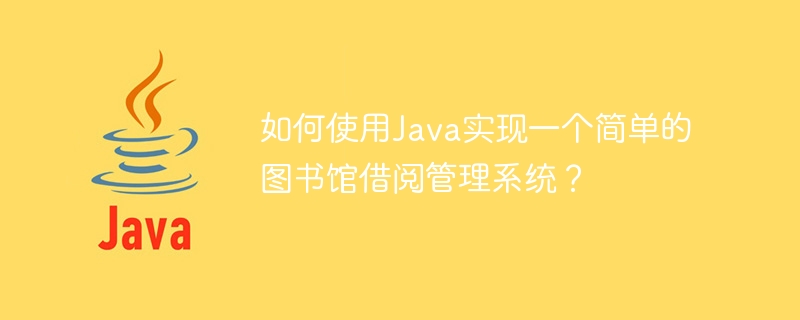

How to use Java to implement a simple library borrowing management system?
With the advent of the digital age, library lending management systems have become an important tool for library management. It can not only improve borrowing efficiency, but also reduce manual operations, making the borrowing process more convenient and efficient. This article will introduce how to use Java programming language to implement a simple library lending management system.
Before we start, we need to clarify the requirements and functions of the system. A basic library borrowing management system should include the following functions:
Next, let us implement this system step by step.
First, we need to design a data model to store information such as books, users, and borrowing records. The following classes can be created to represent different entities:
In order to facilitate the management of books, we can create a book management class (BookManager) to implement the following functions:
In order to manage the borrowing operation, we can create a borrowing management class (BorrowManager) to implement the following functions:
In order to manage user information, we can create a user management class (UserManager) to implement the following functions:
Finally, we can write a main program to call the methods of the above class to realize the overall function of the library lending management system. In the main program, we can use loop statements to receive instructions entered by the user and call the corresponding methods to complete the corresponding operations.
Through the above steps, we can use the Java programming language to implement a simple library borrowing management system. Of course, this is just a basic framework and you can expand and optimize it according to actual needs. I hope this article will help you understand and learn how to use Java to implement a library lending management system!
The above is the detailed content of How to implement a simple library borrowing management system using Java?. For more information, please follow other related articles on the PHP Chinese website!
